ON-A proposes covering Barcelona's Nou Camp stadium with Nou Parc
Barcelona studio ON-A has envisioned a 26-hectare park in the city that would rise up to cover FC Barcelona football stadium to the west.
Named Nou Parc, as a direct reference to the Nou Camp stadium's name, the forested park would cover the venue along with the surrounding car parks and other smaller sports venues.
ON-A created the proposal to demonstrate how large areas of parkland could be introduced into cities.
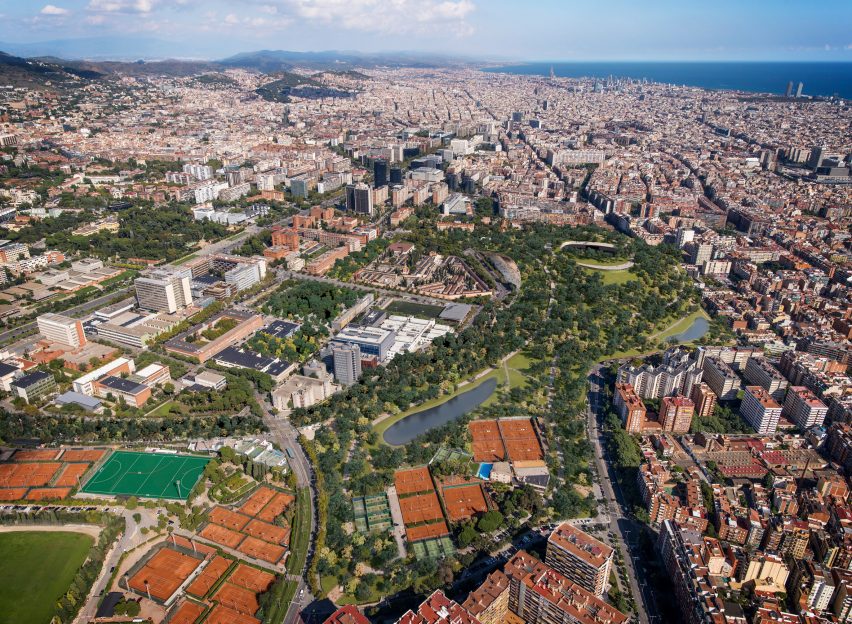
"Nou Parc is a project that encourages showing how cities could be renatured without losing building space; a win-win between the private and the public," explained ON-A Architecture founders Jordi Fernández and Eduardo Gutiérrez.
"The main goal is renaturalising the city of Barcelona and then extending this model to other communities," they told Dezeen.
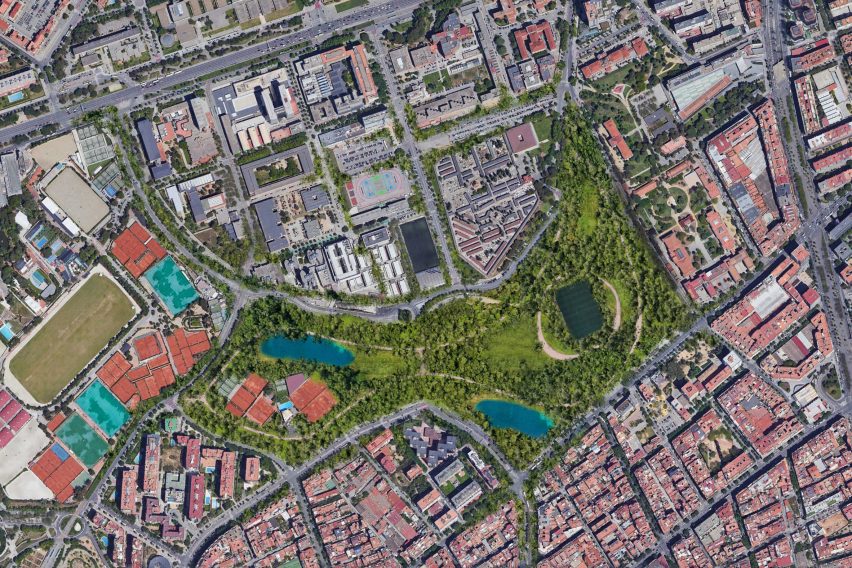
The park would be elevated to cover FC Barcelona's stadium, which was completed in 1957 and is currently the largest football stadium in Europe, with only the space above the pitch left open to the sky.
The elevated topography would also cover the club's nearby shops as well as an indoor sports arena, ice rink, second stadium and practice pitches.
ON-A Architecture proposes that all these buildings would continue to function underneath the forested park
"Our proposal is to define a new model of convivence between humans and nature," said Fernández and Gutiérrez.
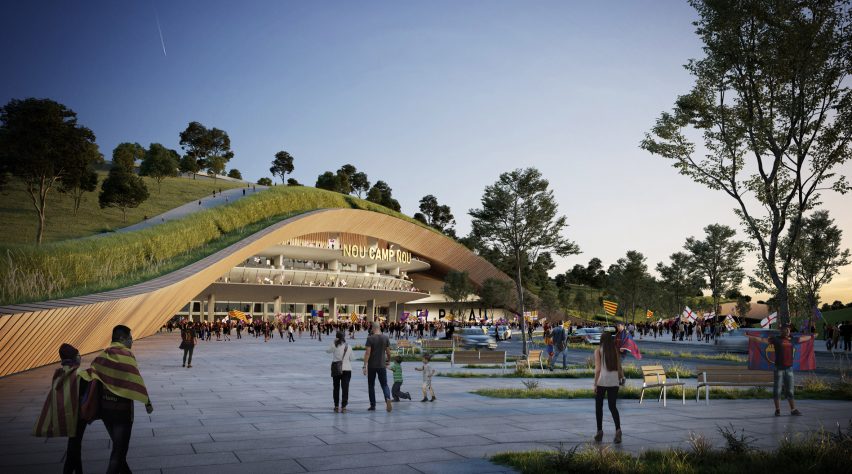
According to the studio, the fenced area that contains FC Barcelona's facilities currently only has eight per cent green space, with buildings and sports areas occupying 42 per cent of the area and 50 per cent of the space covered by hard pavement.
The proposal would open this area up to the public and greatly increase the amount of green space in the city.
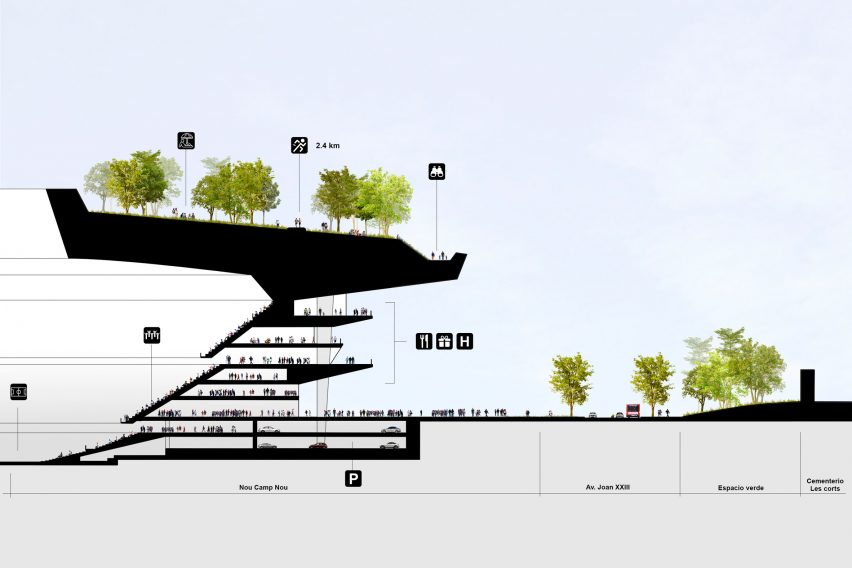
"Nou Camp is a large area in the middle of the city that could connect two neighbourhoods through a green park," Fernández and Eduardo Gutiérrez said.
"That would approach us to the target of nine square metres of green area per inhabitant suggested by the World Health Organisation," they added. "Currently, Barcelona has just over six square metres per inhabitant."
"In the city of Barcelona, our hometown, there are few spaces where you can carry out a project like this."
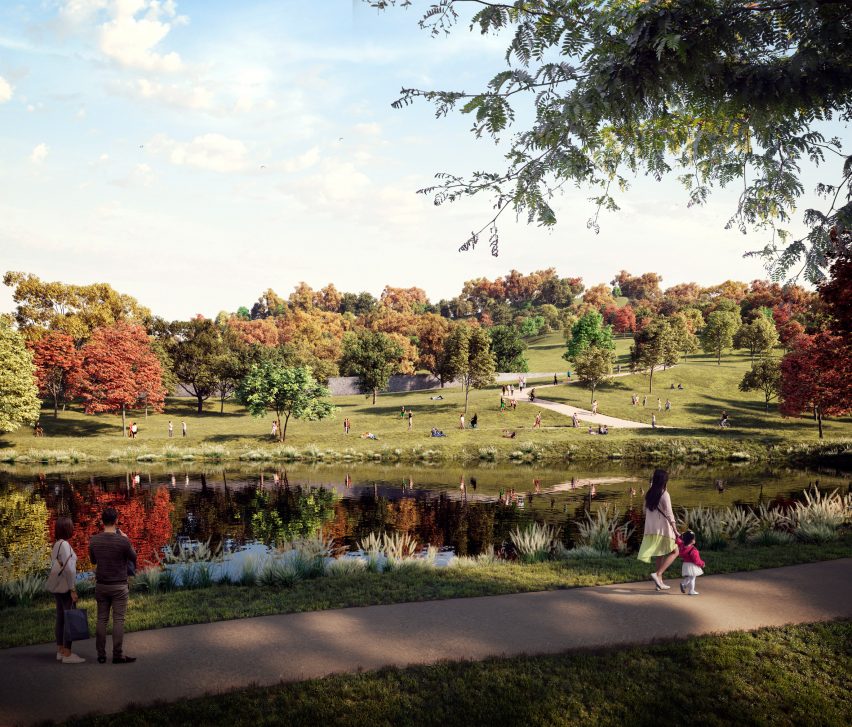
To reduce the park's water consumption ON-A would create two lakes that would collect rainwater, which would be reused to water the trees and plants.
"We are aware that cities must be re-naturalised, and that green provides unquestionable benefits for health, but the issue is not only green, the debate revolves around blue as well: the water," said Fernández.
"We cannot be green if that implies an excessive use of resources," he continued. "The technology for the control of water consumption has come a long way and allows us to innovate and optimise green areas in urban spaces."
"We have been betting on these systems for years, but research in this sector should be further promoted."
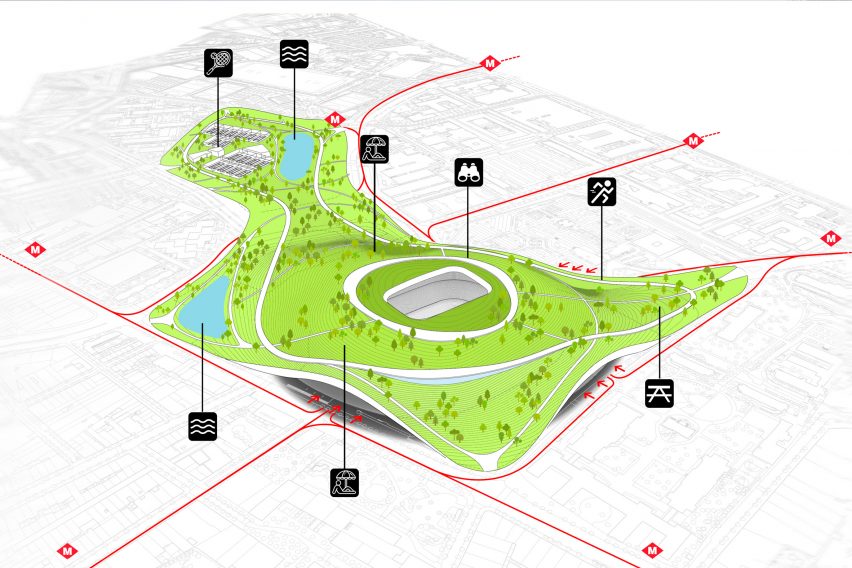
ON-A do not expect Nou Parc to be built as the Nou Camp stadium is set to be redeveloped by Tokyo-based architecture firm Nikken Sekkei and Barcelona studio Pascual i Ausió Arquitectes.
"At this moment there is an approved project over the area, therefore our proposal is just a wake-up call on the need of having more green places in the city," said Fernández and Gutiérrez.
Other recent projects that involve greening stadiums include Italian architect Angelo Renna proposal to create a public memorial for those that lost their lives during the coronavirus pandemic by planting 35,000 cypress trees in Milan's San Siro stadium.
While last year Swiss art curator Klaus Littmann planted 300 trees in an Austrian football stadium as a "memorial" to the environment.